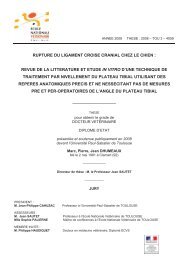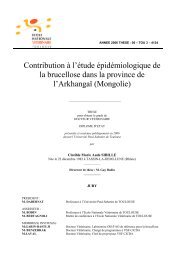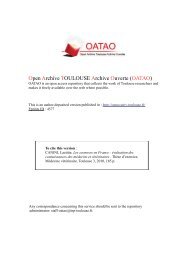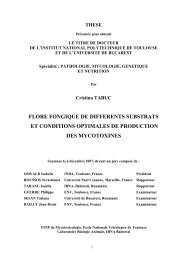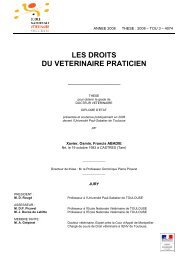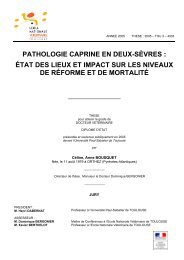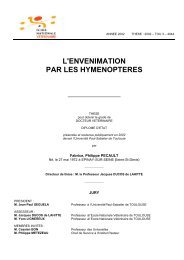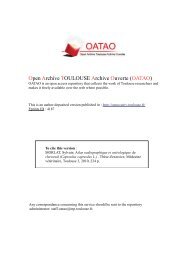PDF ( Author's version) - OATAO (Open Archive Toulouse Archive ...
PDF ( Author's version) - OATAO (Open Archive Toulouse Archive ...
PDF ( Author's version) - OATAO (Open Archive Toulouse Archive ...
Create successful ePaper yourself
Turn your PDF publications into a flip-book with our unique Google optimized e-Paper software.
more relevant for their vital life cycle requirements. Nevertheless, the impact of flow<br />
regularization, and particularly its decrease, goes well beyond fish entrance in freshwaters.<br />
Trout juveniles’ survival is largely dependent on freshwater discharge during early spring<br />
since a higher discharge increases the spatial habitat availability (Lobón-Cerviá 2007).<br />
Native species life cycle evolution occurred according to natural patterns of river flow<br />
and flow anomalies resulting from discharge regulation may decouple the natural cycle<br />
between water temperature and flooding, affecting both fish spawning and movement (Lasne<br />
et al. 2007b; Jones & Stuart 2008). More than 90% of the Baltic salmon populations have<br />
been lost due to river regulation for hydropower purposes (Ackefors et al. 1991). Alteration of<br />
the morphological or hydrological characteristics of any given ecosystem should therefore be<br />
carefully examined when analyzing fish population trends.<br />
Finally, and in the context of the future climate change scenario (see below), the<br />
variability in the rivers’ flow presents great ecological and management challenges and there<br />
is a potential leading to increased engineering responses to these possible changes with<br />
potential pay offs in the ecosystem stress (Malmqvist & Rundle 2002).<br />
2.5. Climate Change<br />
Historical events such as glaciations constrained the continental distribution of<br />
diadromous species, but the consequences of recent and predicted climatic trends on species<br />
ecology are still unclear.<br />
According to most of the predictions, the number of extreme events such as floods and<br />
droughts will increase in Europe in the near future, and the temperature range will expand<br />
(IPCC 2007). Those are some of the consequences of climate change most affecting inland<br />
waters, but alterations on winds and water circulation are predicted for oceans (IPCC 2007).<br />
Since diadromous species take advantage of both inland and oceanic waters, it is expectable<br />
that at some point in their life cycle they will be influenced by environment changes due to<br />
climate alterations (Lassalle et al. 2008).<br />
Salmonids are sensitive species on their preference for a river or stream area for<br />
reproduction and survival of their offspring. In general, the distribution range of migratory<br />
fishes may change and earlier migrations may occur (IPCC 2007). Potential impacts may<br />
result from long series of dry years and rising water temperatures.<br />
Contrary to salmonids, the European eel is not so selective, occupying a variety of<br />
habitats in inland waters. Knights (2003) described the continental phase of this species as<br />
tolerant of a wide range of environmental conditions and with a broad choice of prey, which<br />
along with the fact that they do not spawn in fresh water, makes them less vulnerable to<br />
change. Being so, from all the factors reported as leading to a decline in the European eel<br />
population, ocean-climate changes interfering with larval (leptocephali) transport may be key<br />
influences leading to recruitment failure (Castonguay et al. 1994; Friedland et al. 2007;<br />
Knights 2003). Larval survival is possibly affected by starvation and/or unfavorable currents<br />
that prevent or prolong the duration of the oceanic migration (Friedland et al. 2007; Knights<br />
2003).<br />
Bonhommeau et al. (2008) also focused on the oceanic phase and particularly on the<br />
potential effect of oceanographic and trophic conditions encountered by eel larvae on the<br />
patterns of variability and the decline in glass eel recruitment over several decades. They have





